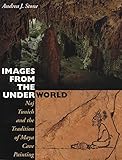Images from the Underworld : Naj Tunich and the Tradition of Maya Cave Painting / Andrea J. Stone.
Material type: TextPublisher: Austin : University of Texas Press, [2021]Copyright date: ©1995Description: 1 online resource (304 p.)Content type:
TextPublisher: Austin : University of Texas Press, [2021]Copyright date: ©1995Description: 1 online resource (304 p.)Content type: - 9780292756489
- 709.0113097281
- online - DeGruyter
| Item type | Current library | Call number | URL | Status | Notes | Barcode | |
|---|---|---|---|---|---|---|---|
 eBook
eBook
|
Biblioteca "Angelicum" Pont. Univ. S.Tommaso d'Aquino Nuvola online | online - DeGruyter (Browse shelf(Opens below)) | Online access | Not for loan (Accesso limitato) | Accesso per gli utenti autorizzati / Access for authorized users | (dgr)9780292756489 |
Frontmatter -- Contents -- Acknowledgments -- 1 Introduction -- 2 The Topographic Context of Maya Cave Painting -- 3 A Further Exploration of Topographic Context: The Mesoamerican Landscape and the Cave -- 4 Maya and Mesoamerican Cave Painting: A Survey of Sites and Images -- 5 Naj Tunich: An Introduction to the Site and Its Art -- 6 Images from Naj Tunich -- 7 The Hieroglyphic Inscriptions of Naj Tunich -- 8 A Catalog of Naj Tunich Paintings and Petroglyphs -- 9 Maya Cave Painting: Summary of a Tradition -- APPENDIX A The Geologic Context of Maya Cave Paintings -- APPENDIX B Standard Cave Map Symbols -- Notes -- Bibliography -- Index
restricted access online access with authorization star
http://purl.org/coar/access_right/c_16ec
In 1979, a Kekchi Maya Indian accidentally discovered the entrance to Naj Tunich, a deep cave in the Maya Mountains of El Peten, Guatemala. One of the world's few deep caves that contain rock art, Naj Tunich features figural images and hieroglyphic inscriptions that have helped to revolutionize our understanding of ancient Maya art and ritual. In this book, Andrea Stone takes a comprehensive look at Maya cave painting from Preconquest times to the Colonial period. After surveying Mesoamerican cave and rock painting sites and discussing all twenty-five known painted caves in the Maya area, she focuses extensively on Naj Tunich. Her text analyzes the images and inscriptions, while photographs and line drawings provide a complete visual catalog of the cave art, some of which has been subsequently destroyed by vandals. This important new body of images and texts enlarges our understanding of the Maya view of sacred landscape and the role of caves in ritual. It will be important reading for all students of the Maya, as well as for others interested in cave art and in human relationships with the natural environment.
Mode of access: Internet via World Wide Web.
In English.
Description based on online resource; title from PDF title page (publisher's Web site, viewed 26. Apr 2022)


